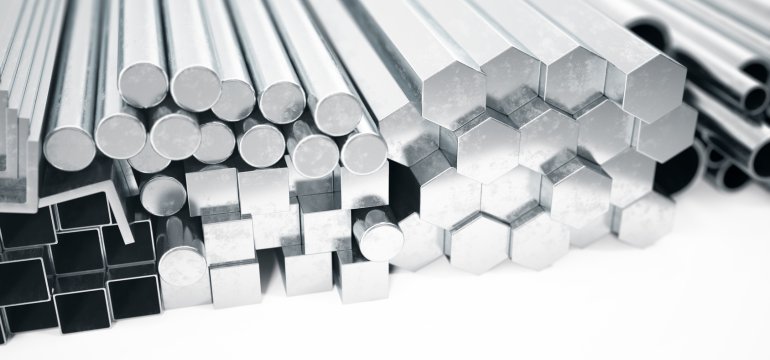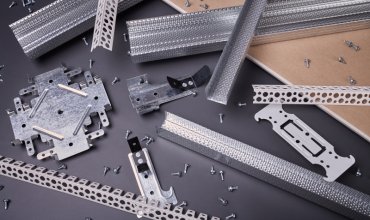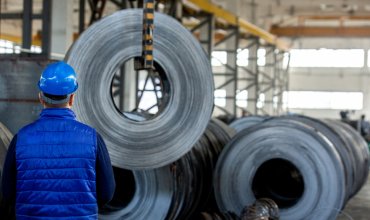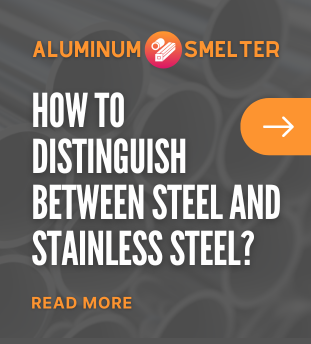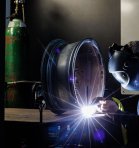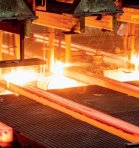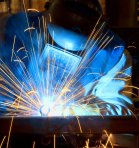How to distinguish between aluminum and duralumin? This question is being asked by more and more people, both amateurs and metal professionals. Although the two materials may look very similar at first glance, the differences between them are significant and affect their application in various fields. In Poland, where the metal industry plays a significant role, understanding the differences between aluminum and duralumin is essential. In this article, we'll take an in-depth look at the two materials, how to tell them apart and why it's important. We'll cover key properties, applications and identification methods, as well as expert opinions to provide a full, comprehensive picture of the subject.
Physical and chemical properties
Aluminiom - a lightweight and versatile metal
Known for its lightness and versatility, aluminum is one of the most widely used metals in the world. It has a low density, making it an ideal material for components where weight matters, such as in the aerospace and automotive industries. It is also resistant to corrosion due to its natural surface coating with aluminum oxide (Al2O3), which is formed when it comes into contact with air. In addition, aluminum is an excellent conductor of heat and electricity, making it desirable in electronics and various branches of engineering.
However, the mechanical properties of aluminum can be improved by adding other metals - a process called alloying. Aluminum alloys have varying degrees of hardness, strength and resistance, allowing for a wide range of applications.
Duralumin - a reinforced aluminum alloy
Duralumin, also known as duralumin, is an aluminum alloy in which the predominant additives are copper, magnesium and manganese. It was developed in the early 20th century as a response to the need for lighter yet stronger materials in the aerospace industry. Due to the presence of these elements, duralumin is much stronger and harder than pure aluminum, while maintaining a low weight.
Duralumin also has a higher yield strength and better fatigue strength, making it an ideal material for structural applications. As an aircraft structural component, duralumin must meet stringent strength requirements while withstanding harsh operating conditions.
Applications in various industries
Aluminum - from food film to electrical components
Aluminum finds its use in almost every industry. In households, we encounter it every day in the form of aluminum foil, beverage cans or household appliance components. In the construction industry, it is used for window frames, building facades and roof structures. Thanks to its conductivity, aluminum is also widely used in electronics to make wires, circuits and radiators.
Aluminum is also an important ingredient in the transportation industry, where it is used to make the bodies of cars, trains and even bicycles. Its low weight reduces fuel consumption, which has a direct impact on energy efficiency and carbon emissions.
Duralumin - a key material in aviation and aerospace
Duralumin is invaluable in the aerospace industry due to its strength and lightness. It is used to manufacture aircraft fuselages, wings, as well as various structural components that must withstand enormous stresses and temperature changes. Its use makes it possible to significantly reduce the weight of aircraft, which translates into lower fuel consumption and greater flight efficiency.
In the space industry, duralumin is used to build satellites, rockets and other equipment that must survive the extreme conditions of space. Thanks to its properties, duralumin is also used in the manufacture of advanced sports equipment, such as high-performance bicycles, field hockey sticks, and racing car parts.
Methods for identifying aluminum and duralumin
Basic laboratory tests
Traditional laboratory methods can accurately determine the chemical composition of metal samples. This uses chemical analysis methods such as spectroscopy or chromatography, which allow the precise determination of the elemental content of a sample. In the case of aluminum and duralumin, chemical analysis makes it possible to isolate the presence of alloying additives such as copper or magnesium, which are characteristic of duralumin.
Practical mechanical tests
Differences in mechanical strength between aluminum and duralumin can be checked using strength tests. A tensile test can determine yield strength and tensile strength, which can quickly identify duralumin, which will exhibit significantly higher values compared to pure aluminum. Hardness tests, such as the Brinell or Vickers method, are also useful in differentiating the two materials.
Visual and manual identification methods
Although visual identification methods may be less accurate, in many cases they are sufficient to distinguish between aluminum and duralumin. Aluminum is softer and more flexible, which can be felt to the touch and when trying to bend it by hand. Duralumin is harder and less prone to deformation. In cases where the two samples look similar, simple hand tests can quickly verify which material we are dealing with.
In addition, aluminum surfaces can show characteristic oxidation marks - a silvery-white tarnish - which is less often seen with duralumin due to the presence of copper, which changes the color of the oxidized metal.
Experiments and industrial methods
In industry, advanced analysis methods, such as scanning electron microscopy (SEM) and X-ray analysis, are often used to determine very precisely the composition and structure of the samples under investigation. These techniques are particularly useful for advanced applications where an accurate understanding of material properties is crucial.
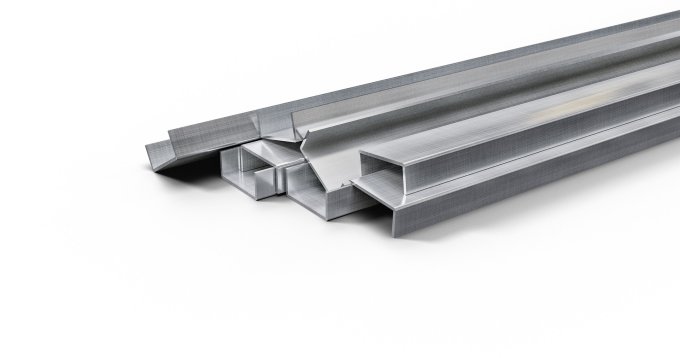
Differences in strength and durability
Mechanical properties of aluminum
Aluminiom, despite being a lightweight material, has relatively good mechanical strength. However, its basic mechanical properties, such as hardness, yield strength and tensile strength, may be insufficient for high-strength applications without proper alloying. For example, the tensile strength of pure aluminum is about 70-200 MPa, which is much lower compared to duralumin.
Strength and durability of duralumin
Duralumin, thanks to the addition of copper, magnesium and manganese, is much more durable. The tensile strength of duralumin can range from 300 to 700 MPa, making it an ideal material for structures subjected to heavy loads. Duralumin is also more resistant to fatigue phenomena, which is crucial in applications such as aviation, where structural components are subjected to multiple load cycles.
It is also worth noting that duralumin is more susceptible to the corrosion dulling phenomenon of aluminum oxidation, which requires additional protective processes such as anodizing or surface coating.
Comparative strength tests
To accurately compare the strength of the two materials, comparative tests are often used in which samples are subjected to the same loads and operating conditions. These tests can include specimens stretched to the limit, fatigue tests and corrosion simulations in different environments.
In these tests, duralumin typically performs significantly better, showing higher tensile strength values, greater fatigue resistance and better mechanical properties under extreme conditions.
Cost and availability
Availability of aluminum in Poland
Aluminum is widely available in Poland. Its production and distribution is developed, and the metal is used in many industries. Local suppliers offer aluminum in various forms: foil, sheet metal, bars or profiles, making it readily available to both large companies and individual consumers. The cost of aluminum is relatively low compared to other metals, adding to its appeal.
Production and purchasing costs of duralumin
Duralumin, due to its more complex production process and higher raw material costs, is more expensive than pure aluminum. The addition of copper, magnesium and manganese raises production costs, and the technological processes required to produce duralumin are more complicated. As a result, the availability of this material may be more limited and prices higher.
However, duralumin is worth its price in cases where high strength and reliability are required. Its mechanical properties and load resistance make it a worthwhile investment for long-term projects requiring the highest standards.
Expert opinions
Aerospace engineers about dural
Aerospace engineers often emphasize that duralumin is an irreplaceable material in aircraft structures. Its strength and lightness make it an ideal choice for structural components that must withstand extreme operating conditions. An engineering materials expert points out that the use of duralumin saves aircraft weight, which translates directly into flight economy and lower fuel consumption.
In turn, engineers involved in satellite and rocket design point to duralumin as a material that combines high strength with resistance to harsh space conditions. Duralumin is also the preferred material for the construction of advanced sports equipment, which requires lightweight but highly durable components.
Automotive industry and aluminum applications
In the automotive industry, aluminum is valued for reducing the weight of vehicles, which is crucial for energy efficiency. An automotive expert points out that the degree of aluminum use in new car models is steadily increasing, especially in premium segments where both strength and weight minimization are important.
In mass-market applications, such as the manufacture of vehicle bodies, various structural profiles and engine components, aluminum is unrivaled due to its lightness, strength and corrosion resistance. It is also a relatively inexpensive material, which corresponds well with the economic model of mass production.
How do you tell the difference between aluminum and duralumin in practice?
Laboratory testing
One of the most reliable ways to distinguish aluminum from duralumin is to conduct laboratory tests. Specialized metallurgical laboratories can accurately determine the chemical composition of a sample, which allows precise identification of metal alloys. Spectroscopic or X-ray analysis can detect the presence of alloying additives characteristic of duralumin.
Mechanical testing
In industrial settings, strength tests can be used to quickly distinguish aluminum from duralumin. Tensile testing and hardness tests can provide immediate information on the mechanical properties of both materials. Duralumin, due to its higher copper and magnesium content, exhibits greater strength and hardness compared to pure aluminum.
Simple manual methods
The use of simple manual tests can be useful in conditions without access to sophisticated equipment. Duralumin samples tend to be heavier and harder than pure aluminum samples. Manual bending tests can give clues - duralumin will be more rigid and harder to deform. Even the simple use of a magnet can help, as aluminum does not react to a magnet, while duralumin alloys may show a slight attraction due to their iron content.
Visual comparison and experience
A significant number of engineers and technicians can tell the difference between aluminum and duralumin based on experience and observation. The aesthetic differences in surface color that experts learn when working with these materials can be distinguishable - duralumin often has a darker, matte appearance compared to lighter, metallic aluminum. In addition, traces of oxidation or corrosion can give clues to the type of alloy.
Summary
How to tell the difference between aluminum and duralumin is a question that is becoming increasingly important in many industries. With knowledge of the differences in chemical composition, mechanical properties and practical identification methods, professionals and amateurs alike can effectively identify and use the right materials in their projects. Aluminum offers lightness and versatility, while duralumin, with its strength, is used in demanding applications like aerospace. Knowledge of these materials and the ability to identify them is the key to efficient use of resources and achieving the highest standards in manufacturing and engineering.


